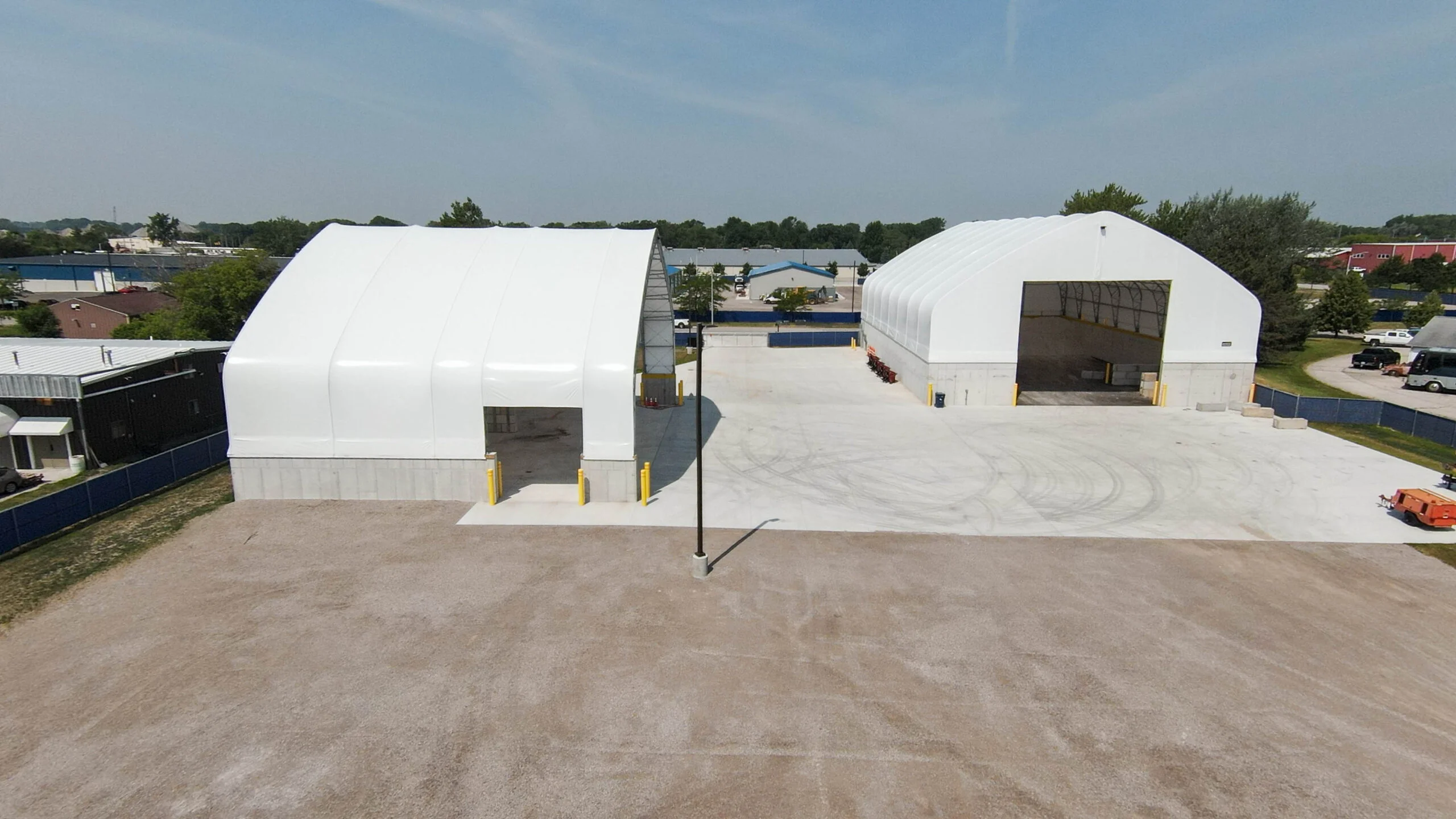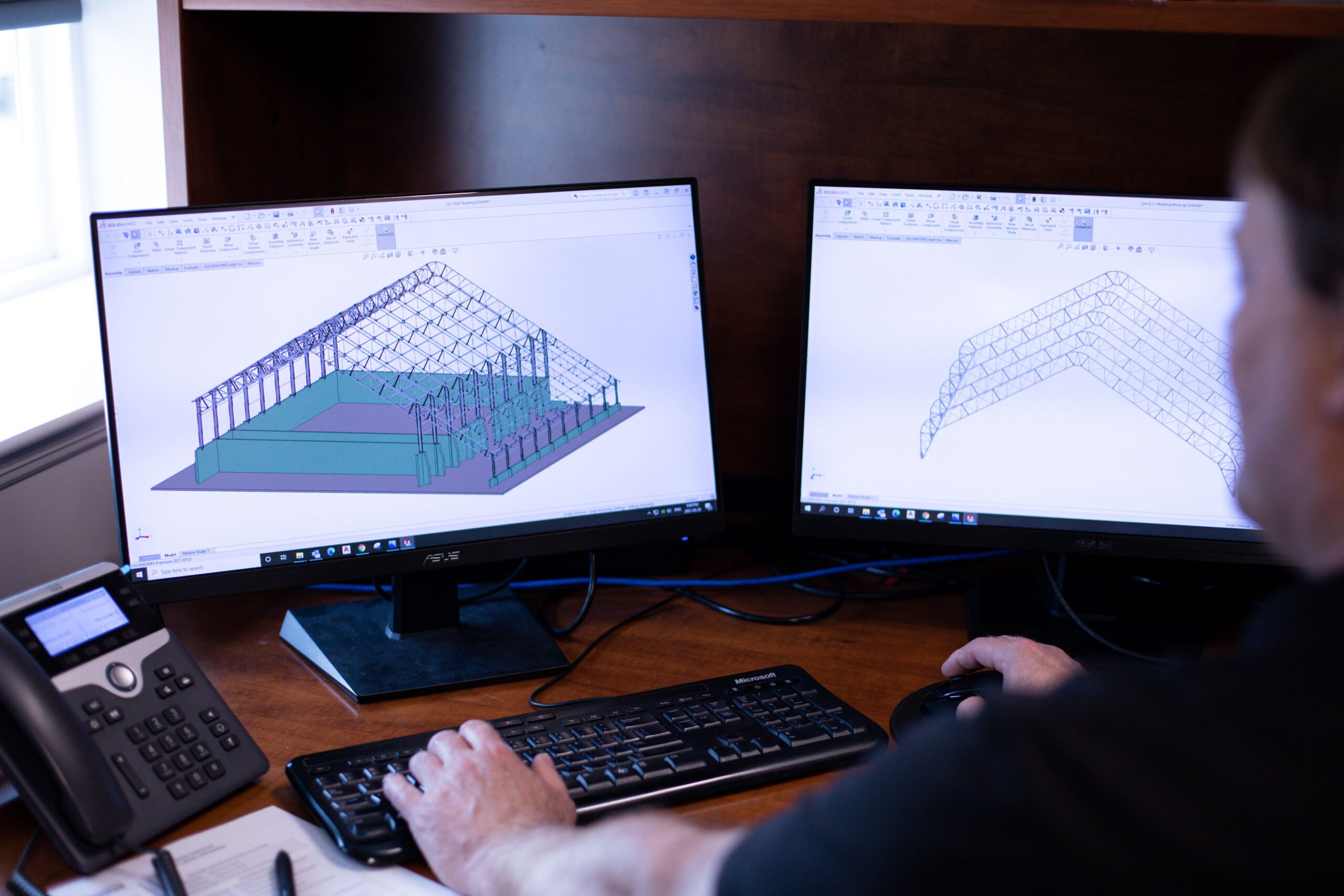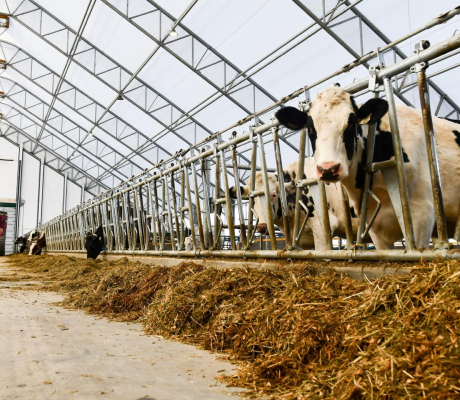Natural Ventilation for Dairy Cows: Effective Ways to Combat Heat Stress & Boost Production

Rising temperatures can threaten dairy cow health, milk production, and overall farm profitability. One of the most effective and economical strategies? Natural ventilation for dairy cows. This method harnesses environmental airflow to reduce heat stress, improve comfort, and support greater output—all without raising your energy bill.
At Britespan, we understand the importance of optimizing dairy farm environments to improve milk production. Our agricultural fabric building design supports this. Consider how you can improve natural ventilation for dairy cows as an impactful but affordable way to improve operational efficiencies.
How Does Heat Stress Impact Key Dairy Farm Metrics Like Milk Yield and Reproduction?
Heat stress in dairy cows is a commonly known factor that directly reduces milk production. It can also impact reproductive success, cow health, and cow overall well-being. How?
Dairy cow health and comfort play a direct role in the production of milk. Heat stress causes the cow’s natural metabolism to shift from producing energy to cooling the animal. That means less energy is put towards the production of milk. Additionally, heat stress can also impact the composition of the milk itself, reducing the amount of fat and protein present and thus creating a lower-quality product.
Applying proper and effective heat abatement solutions is not just about making a cow comfortable. It directly impacts the economics of running your dairy farm.
What Are the Key Principles of Natural Ventilation for Achieving Optimal Cooling in Dairy Barns?
Natural ventilation for dairy cows is a viable solution. It mitigates the concern of heat but does so without elevating operating costs, which also impacts the profitability of any dairy farm. By increasing natural ventilation, it’s possible to create an optimal environment, and that often means effective cooling.
Dairy barn airflow optimization often seems like it can only be mechanical. However, natural ventilation vs. mechanical ventilation requires careful balance. Mechanical costs drive up the cost of operation, but they can also fail. If they do, it can create significant stress on the animals. Alternatively, natural ventilation for dairy cows uses the environment, which cows are accustomed to adjusting to, to improve conditions.
When designing your dairy barn, you’ll work closely with an installer to create the ideal environment. Keeping animals cool is critical, and with a few key considerations, you will be able to do that using Mother Nature instead of electricity. Some of the key principles that play a role in this include:
- The orientation of the building: East-west maximizes the amount of cross ventilation possible by capturing prevailing winds.
- Ridge ventilation: Proper ridge openings allow hot air to rise away, and the roof pitch also plays a role in this.
- Sidewall design: The design of the sidewall will affect the effectiveness of natural ventilation. For example, a high sidewall with an adjustable curtain opening improves cross-ventilation.
- Site layout: Not just the building, but the entire site’s layout can impact the operational efficiency of your dairy barn and provide better overall natural ventilation.
- Internal layout: A design inside that minimizes structures, such as columns, can improve overall air ventilation throughout the space.
Beyond Milk Production: What Are the Other Operational Benefits of Effective Natural Ventilation for Dairy Cows?
As noted, natural ventilation enhances milk production and can offer additional benefits to your dairy farm. For example, some of the benefits of fabric buildings for dairy farming also include:
- Provides better feed intake and optimizes energy in that way.
- Improves lying time, which means better animal health and well-being.
- Improves lameness by supporting foot health
- Enhances longevity, reducing costs and amplifying production ability
Improving milk production with cooling is an important consideration, but each of these areas also offers a critical advantage when investing in natural ventilation for dairy cows.
Why Fabric Buildings for 
The investment in a fabric dairy barn is one of the most important and effective ways to enhance ventilation without the cost of mechanical solutions. Britespan can help you achieve the best outcome in a number of ways including helping you choose the right size fabric building for your dairy farm and ensuring professional installation.
When you invest in a fabric building constructor like Britespan, you can expect:
- Customized help to support you in creating a fabric building that fits your budget and provides long-term growth opportunities for your dairy farm
- Exceptional support as you choose the best type of building for your project needs, including our Epic Series, which are often some of the best fabric building options for dairy farms
- Natural ventilation that requires limited mechanical operation, reducing your costs of operating your location while still stimulating and supporting optimized milk production
- Long-term durability with a structure that can last for decades, and provides very little annual updates and maintenance in general
- An environment that fits the cow’s natural habitat, which keeps them happy and enhances milk production
Natural ventilation for dairy cows isn’t just a nice-to-have—it’s a critical factor for health, productivity, and profitability. When you consider all the fabric building benefits, Britespan can easily become your go-to solution. To improve the operations and production at your dairy farm, turn to our team to learn more about the options for natural ventilation through our fabric buildings. Contact us now.


